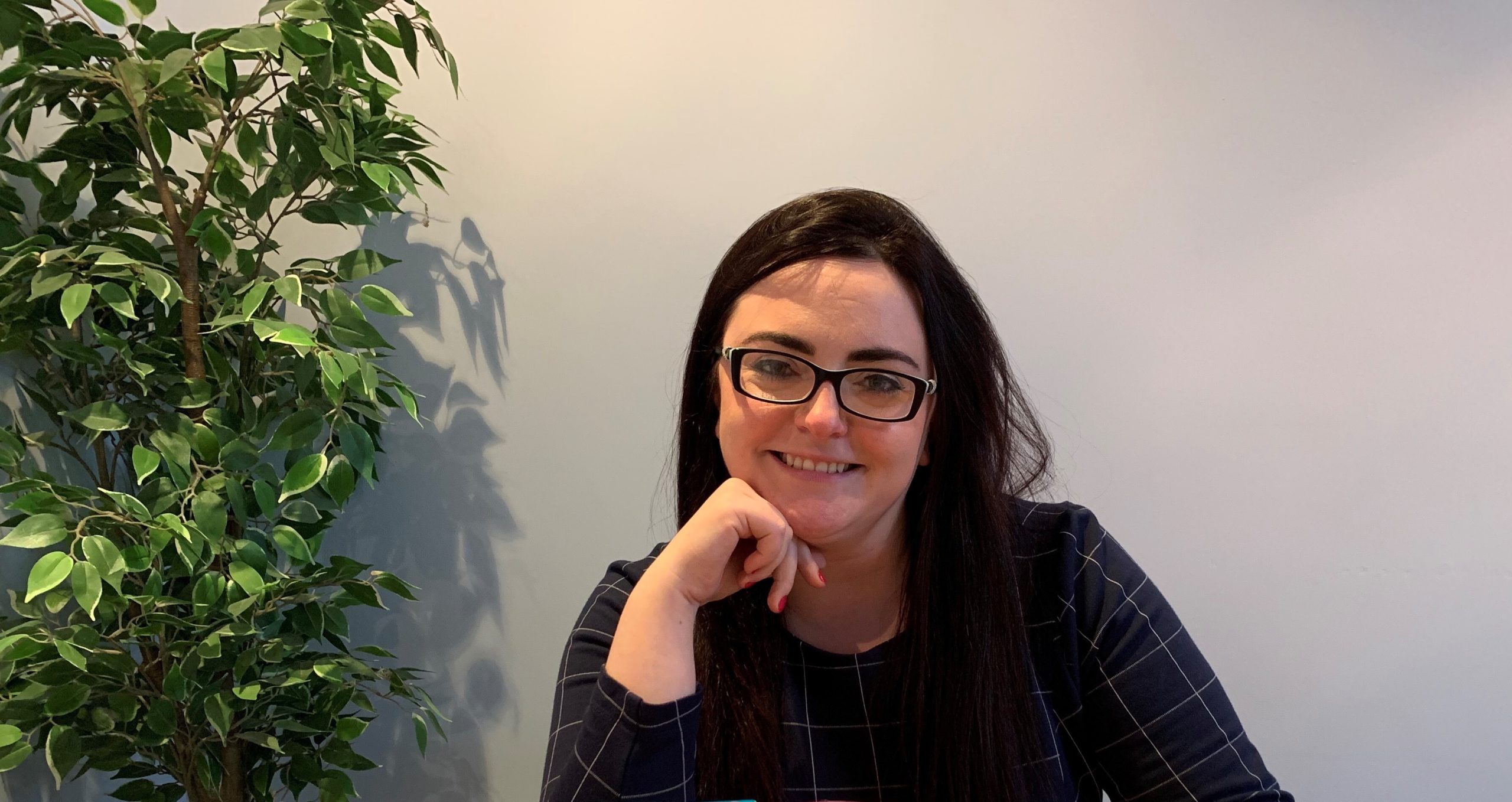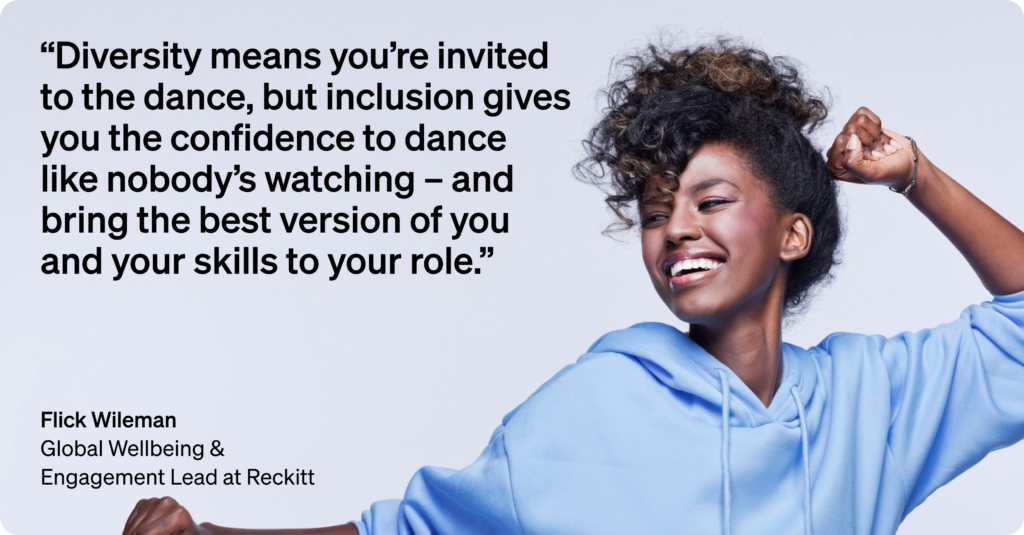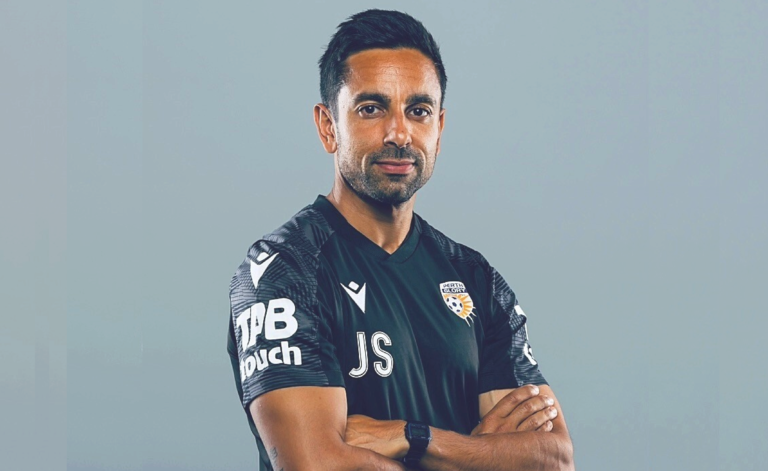How Is Wellbeing Impacted By Diversity, Equity & Inclusion? We Spoke With Flick Wileman from Reckitt

It’s clear that organisational wellbeing programmes must be underpinned by diversity, equity and inclusion in mind, in order to be effective. But how can international companies ensure that their wellbeing support reaches their global workforce and encompasses everything from religion to race to sexuality to cultural differences? Our Customer Success Manager, Madison Harris, discussed the topic with Flick Wileman, the Global Wellbeing & Engagement Lead at Reckitt.
It was a pleasure to chat to Flick Wileman. Flick leads wellbeing and engagement efforts globally at Reckitt, a British multinational company with around 40,000 people of 125 different nationalities operating in 68 countries. After working with people from across the world’s biggest fast moving consumer goods brands, Flick has discovered that considering DE&I when crafting wellbeing programmes can lead to impressive results.
Before we explore today’s main topic, I’d love to know what wellbeing means to you?
Wellbeing is pretty complex and hard to define, even if it is one of the most talked about subjects of occupational psychology. It’s a layered topic. For individuals, wellbeing could be about ensuring low levels of personal stress. For teams, it could mean promoting a culture of psychological safety, where people feel free to talk about mental health openly. And at an organisational level, strong wellbeing leads to greater retention. It can feel like engagement and wellbeing are separate, but high levels of either can boost the other.
What motivated you to build a career around helping other people thrive?
My mother ran pubs in London when I was growing up, so I was always around people. She was a surrogate mother to many of our staff who were gay, Black or from multi-ethnic backgrounds. And my mum did this during the 90s when prejudice was rife, but we had this wonderful, diverse family who just accepted each other. My upbringing gave me an innate appreciation of people from all walks of life.
Before I joined Reckitt, I came to understand my why and where my skills lie. I had been leading a large team of people but I used my why as a guiding compass and moved into a new space I had no experience in. As someone who’s inspired by transformational leadership, I knew I’d be energised in a role where I focused on getting the best out of people. And I have been, greatly – so much so that I’m studying for a part-time degree in organisational psychology outside of work to fuel my passion for my job!
That’s fascinating. To you, why is DEI key to a thriving workplace?
Different voices and opinions forge better and healthier businesses, particularly in the consumer goods space where the consumer base is incredibly diverse. Equity means people are treated fairly in every way, from compensation to resources. And inclusion means everyone feels like they belong and are fully integrated. Diversity means you’re invited to the dance, but inclusion gives you the confidence to dance like nobody’s watching – and bring the best version of you and your skills to your role.
In my role, I take a holistic view of anything that could hamper wellbeing. DEI isn’t a formal part of my role, but it’s essential for me to consider how it’s impacting the employee experience – as I do with areas like talent acquisition and learning and development, for example. If we’re falling down in one area, I need to understand how we can change to improve wellbeing.
Diversity and equity are incredibly basic things to get right and, to me, it’s the foundation of good wellbeing. We’ve noticed that if people don’t feel seen, heard and valued, they will leave. But to optimise wellbeing for everyone, you’ve got to communicate with a potentially global audience in a way that feels personal.

And how can organisations measure the impact of their DEI initiatives on wellbeing and performance?
It seems tricky to measure things like psychological safety and the idea of measuring wellbeing has become a bit of a silver bullet question. But it’s certainly possible. You can analyse top-level performance indicators like retention, attrition and engagement and, with the right data tools, you can filter to see the impact on specific demographics.
It’s incredibly important to make sure as many people are engaged by your wellbeing work as possible. To me, I don’t want to remove workshops or initiatives because they’re not working for a minority, or launch things just for a specific group. Instead, I want to adapt that measure to bring as many people as possible on board and make it truly accessible.
For example, at Reckitt we run monthly Better Life booster sessions with Hintsa, which help our people understand the benefits of topics like good nutrition and exercise. They’re brilliant but, viewed through a DE&I lens, may only be accessible to say 60% of your people. It may be due to language or cultural barriers that prevent people from engaging. So we’ve adapted our sessions, making them available in eight languages, and tailored their content to local audiences – exploring how to dial up wellbeing during Ramadan, for example.
Has the company you work for, Reckitt, seen an increase in how many people are engaging with wellbeing initiatives?
Absolutely. We’ve noticed an uplift in the number of people asking for additional coaching. People are genuinely buying into what we’re offering.
Within our wellbeing programme, we have made some adjustments to our inclusivity approach and these have been acknowledged as “true and authentic depictions of inclusivity”. That piece of feedback really showed me we’re doing the right thing here.
How do you think organisations can sustain inclusive wellbeing efforts year-round?
You’ve got to take action, not just say the right things. Treating inclusivity as a basic hygiene factor for wellbeing is key, but you also need to understand how engaged groups such as LGBTQ+ employees are. A big part of your wellbeing at work is feeling like you have a clear identity and purpose, but that’s not easy for everyone.
Earlier in the year, I asked the global leader of our LGBTQ+ employee resource group what they felt were some of the biggest challenges in the workplace. Finding your identity emerged as a big one, with extra hurdles such as accepting your sexuality or transitioning genders adding extra stress to LGBTQ+ individuals.
We hosted a Pride month session, which focused on understanding your core and identity, and the engagement blew me away. So many people came wanting to learn and help us reinforce the idea of intersectional inclusivity in wellbeing. In many ways, reinforcing a wellbeing message is like marketing; you start with the why and stay consistent in reminding everyone what you’re doing. And if the only time you’re talking about looking after LGBTQ+ employees is during Pride, you’re not bringing that consistency to show your people you really care.
How does Reckitt foster an inclusive culture for all?
Every month, the talent cultural inclusion leadership team (which I’m part of) meets to discuss what we need to dial up and back. For example: do we need to introduce new, inclusive wellbeing activations? I’m a real perfectionist, so having that constant feedback loop helps us adjust what we’re offering to make it even more effective.
I also take my position as a senior role model seriously. I prioritise my physical health more than ever now after spending lots of time making excuses. With the help of my Hintsa coach, John, I’ve been to the gym more than I ever have and ran a 10k, as well as prioritising drinking two litres of water and getting 10k steps in daily. Yes, I’ve lost weight – but I have so much more energy and I’m producing much better work. It’s having such an impact on the people I work with.
And finally, what advice would you give to those who are trying to succeed in the wellbeing space?
I don’t know everything about wellbeing, but there’s one thing I’ve found to be truly fundamental: authenticity. If I want to push a message about why people should be highly engaged, I need to feel that myself. Understanding your why allows you to be authentic in what you do and say. I genuinely enjoy what I do and don’t get the Sunday blues anymore, so it’s easy for me to spread positivity.
You also need to be creative and innovative in your approach. My role is to find new ideas, initiatives and strategies that make our support credible and fun. And finally, I’d say aim for progress instead of perfection. I go into everything with a growth mindset and focus on what I can learn and improve, rather than treating imperfections as failures. Metrics are important to understand the efficacy of what you are doing. However, do not focus on the output, but instead on the input. If people are engaged, the outputs will come as a byproduct.
Thank you so much Flick for having a chat with us! Read more about Reckitt’s ambitions and actions for building a fairer society on their website.



